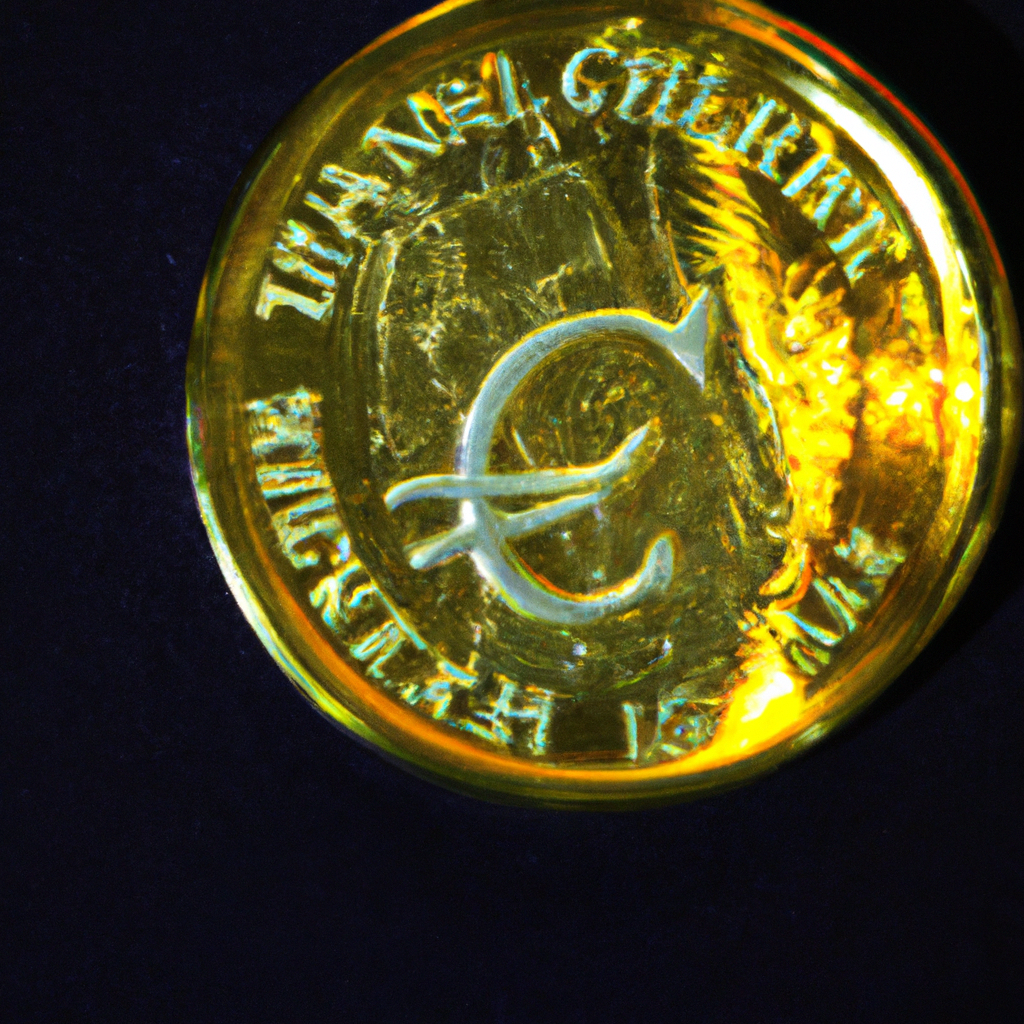Have you ever wondered how the exchange rate of the Malaysian Ringgit affects the prices of gold in the country? As a fund manager and gold investment expert, understanding this relationship is crucial for your investment decisions. In this article, we will explore the impact of the Ringgit exchange rate on gold prices in Malaysia, providing you with valuable insights and analysis. From exploring the dynamics of currency fluctuations to examining historical trends, we will delve into the factors that influence the price of gold in relation to the Ringgit. So grab your coffee, sit back, and let’s dive into the fascinating world of the Ringgit exchange rate and its effect on gold prices in Malaysia.

Factors that Influence Gold Prices in Malaysia
When it comes to understanding the relationship between the Ringgit exchange rate and gold prices in Malaysia, there are several key factors that come into play. By examining these factors, we can gain insight into the dynamics that drive fluctuations in the price of gold in the Malaysian market.
Supply and Demand
One of the primary factors that influence gold prices is the balance between supply and demand. The supply of gold is limited, as it is a finite resource, and this scarcity plays a significant role in determining its price. On the other hand, demand for gold can fluctuate based on various factors such as economic conditions, investor sentiment, and geopolitical uncertainties. When demand for gold outweighs supply, prices tend to rise, and vice versa.
Investor Sentiment
Investor sentiment is another crucial factor that affects gold prices. During times of economic and political instability, investors often flock to safe-haven assets like gold to protect their wealth. This increased demand for gold during periods of uncertainty can drive up its price. Conversely, when investor sentiment is positive and risk appetite is high, the demand for gold may decrease, leading to a decline in prices.
Interest Rates
Interest rates play a significant role in shaping the relationship between the Ringgit exchange rate and gold prices. When interest rates are low, it tends to make gold more attractive as an investment option since it does not offer any yield or interest payments. As a result, lower interest rates can increase the demand for gold, leading to higher prices. Conversely, when interest rates rise, the opportunity cost of holding gold increases, which can reduce its demand and consequently its price.
Inflation
Inflation is an important factor to consider when examining the relationship between the Ringgit exchange rate and gold prices. Gold is often seen as a hedge against inflation, as its value tends to rise with increasing prices. When inflation expectations are high, individuals and investors may turn to gold as a means of preserving their purchasing power. This increased demand for gold during inflationary periods can push its price higher.
Global Economic Conditions
Global economic conditions can also have a significant impact on gold prices in Malaysia. Factors such as economic growth, geopolitical tensions, and trade disputes can influence investor sentiment and drive demand for gold. For example, during times of economic crisis or market volatility, investors may seek the safety and stability provided by gold, leading to an increase in its price. Similarly, when the global economy is performing well and there is optimism in the markets, the demand for gold may decrease, causing prices to fall.
The Relationship between the Ringgit Exchange Rate and Gold Prices
Now that we have explored the factors that influence gold prices in Malaysia, let’s delve into the specific relationship between the Ringgit exchange rate and gold prices. Several key aspects help us understand how these two variables interact.
Link to Global Currency Markets
The Ringgit exchange rate is not solely determined by domestic factors but is also influenced by global currency markets. The value of the Ringgit relative to other major currencies, such as the US Dollar, Euro, or Japanese Yen, can fluctuate based on factors such as economic indicators, interest rate differentials, and geopolitical events. These fluctuations in the Ringgit’s exchange rate can then have a direct impact on the price of gold in Malaysia.
Effect of Currency Depreciation
When the Ringgit depreciates against major currencies, it generally leads to an increase in the price of gold in Malaysia. A weaker Ringgit makes importing gold more expensive, as it takes more Ringgit to purchase the same amount of foreign currency needed to buy gold. This increased cost of importing gold is then passed on to consumers, resulting in higher gold prices.
Impact on Import and Export Costs
The relationship between the Ringgit exchange rate and gold prices is further influenced by the impact on import and export costs. A weaker Ringgit can increase the cost of importing gold into Malaysia, as mentioned earlier. Conversely, a stronger Ringgit can make it more expensive for Malaysian exporters to sell gold internationally. These costs associated with importing and exporting gold can have a direct influence on domestic gold prices.
Role of Safe-Haven Demand
The relationship between the Ringgit exchange rate and gold prices is also influenced by safe-haven demand. During times of economic or political uncertainty, investors often seek the stability and security provided by gold. As mentioned earlier, this increased demand for gold can drive up its price. Therefore, when the Ringgit weakens due to adverse economic conditions, it can amplify the safe-haven demand for gold, leading to higher gold prices in Malaysia.

Historical Trends and Correlation Analysis
To gain a deeper understanding of the relationship between the Ringgit exchange rate and gold prices, it is crucial to analyze historical trends and conduct correlation analysis. By examining past data, we can identify patterns and quantify the statistical relationship between these two variables.
Analysis of the Ringgit-Gold Relationship Over Time
By analyzing historical data, we can observe how changes in the Ringgit exchange rate have corresponded to fluctuations in gold prices in Malaysia over time. This analysis allows us to identify any long-term trends or correlations between these variables, providing insight into their interconnectedness.
Identifying Patterns and Trends
Examining historical trends can help us identify any patterns or trends that emerge. For example, we may find that during periods of currency depreciation, gold prices tend to rise, or vice versa. By recognizing these patterns, we can predict how future changes in the Ringgit exchange rate may impact gold prices.
Correlation Coefficients
Correlation coefficients provide a statistical measure of the strength and direction of the relationship between the Ringgit exchange rate and gold prices. By calculating the correlation coefficient, we can determine whether there is a positive or negative correlation between these variables and quantify the degree of their association.
Statistical Analysis
Statistical analysis techniques such as regression analysis can help us further understand the relationship between the Ringgit exchange rate and gold prices. These analytical tools allow us to model the relationship between the two variables, identify influential factors, and make predictions about future gold price movements based on changes in the Ringgit exchange rate.
Effect of Ringgit Depreciation on Gold Prices
When the Ringgit depreciates, it has several effects on gold prices in Malaysia. Let’s explore these effects in more detail.
Increase in Local Gold Prices
When the Ringgit weakens against major currencies, it leads to an increase in the price of gold in Malaysia. As mentioned earlier, a weaker Ringgit makes importing gold more expensive, and this increased cost is reflected in higher local gold prices. Therefore, individuals and investors in Malaysia would have to pay more Ringgit to purchase the same amount of gold, resulting in higher prices.
Impact on Gold Imports
Ringgit depreciation can also impact gold imports into Malaysia. As the Ringgit weakens, the cost of importing gold increases, potentially leading to a decrease in the volume of gold imports. This reduction in supply may further contribute to price increases in the domestic gold market.
Incentives for Gold Mining and Production
On the flip side, Ringgit depreciation may provide incentives for gold mining and production within Malaysia. As the Ringgit loses value, the revenue generated from exporting domestically mined gold increases when converted into foreign currencies. This increased revenue potential may encourage local gold mining companies to ramp up production, which could influence the supply dynamics and potentially mitigate price increases.

Impact of Ringgit Appreciation on Gold Prices
When the Ringgit appreciates against major currencies, it can have contrasting effects on gold prices in Malaysia. Let’s examine these effects in more detail.
Decrease in Local Gold Prices
Appreciation of the Ringgit can lead to a decrease in the price of gold in Malaysia. A stronger Ringgit makes importing gold less expensive, as it takes fewer Ringgit to purchase the same amount of foreign currency needed to buy gold. This decrease in import costs can translate into lower local gold prices.
Effect on Gold Imports and Exports
Ringgit appreciation can also impact gold imports and exports. As the Ringgit strengthens, the cost of importing gold decreases, potentially leading to an increase in the volume of gold imports. Conversely, a stronger Ringgit can make Malaysian gold exports more expensive for international buyers. These changes in import and export dynamics can influence the supply and demand dynamics of gold within Malaysia.
Economic Factors Influencing Appreciation
Ringgit appreciation is often influenced by economic factors such as strong economic growth, positive trade balances, and stable political conditions. When these factors align, it can bolster the value of the Ringgit relative to other currencies. Therefore, periods of Ringgit appreciation can be indicative of positive economic conditions, which may decrease the demand for safe-haven assets like gold, leading to lower gold prices.
Role of International Factors in the Relationship
While the specific relationship between the Ringgit exchange rate and gold prices in Malaysia is important, it is equally crucial to consider the role of international factors that impact this relationship.
Global Gold Price Trends
The global price of gold plays a significant role in influencing gold prices in Malaysia. Changes in global supply and demand dynamics, investor sentiment, and macroeconomic factors can all affect the price of gold internationally. Therefore, fluctuations in the global price of gold can have a cascading effect on gold prices within Malaysia.
Major Currency Fluctuations
Fluctuations in major currencies, such as the US Dollar, Euro, or Japanese Yen, can also impact the relationship between the Ringgit exchange rate and gold prices. As mentioned earlier, changes in the value of these currencies relative to the Ringgit can influence the cost of importing or exporting gold, thereby affecting its price.
Trade and Investment Policies
Changes in trade and investment policies, both domestically and internationally, can have a significant impact on the relationship between the Ringgit exchange rate and gold prices. Trade restrictions, tariffs, or changes in investment regulations can influence currency flows and investor sentiment, which can, in turn, affect gold prices.
Import and Export Demand
The demand for gold within Malaysia is not solely driven by domestic factors but also influenced by international demand. Changes in global economic conditions, geopolitical tensions, or shifts in investor sentiment can impact the overall demand for gold, which can then affect its price in the Malaysian market.

Policy Implications and Government Response
Given the relationship between the Ringgit exchange rate and gold prices in Malaysia, it is crucial to consider the policy implications and potential government responses to manage this relationship.
Central Bank Intervention
Central banks, such as Bank Negara Malaysia, may intervene in the foreign exchange market to manage the value of the Ringgit. Intervention measures such as buying or selling foreign currencies can influence the exchange rate and potentially impact gold prices. The extent and frequency of central bank intervention can shape the relationship between the Ringgit exchange rate and gold prices.
Monetary Policies
Monetary policies implemented by central banks can also affect the relationship between the Ringgit exchange rate and gold prices. For example, changes in interest rates can influence investor sentiment and the demand for gold. Additionally, measures related to money supply, inflation targeting, or capital controls can indirectly impact gold prices.
Impact on Export Competitiveness
Changes in the Ringgit exchange rate can impact the competitiveness of Malaysian exports, including gold. A weaker Ringgit can make Malaysian gold exports more affordable and competitive in the international market. Conversely, a stronger Ringgit can make Malaysian gold exports more expensive, potentially limiting their competitiveness. These export dynamics can eventually feed back into the domestic gold market and influence prices.
Measures to Manage Exchange Rate Risk
To mitigate the potential risks associated with fluctuations in the Ringgit exchange rate, market participants, including gold investors, may employ various measures. These can include hedging strategies, such as utilizing derivative instruments or financial products, to manage exchange rate risk. By implementing such measures, investors can mitigate the impact of currency fluctuations on their gold investments.
Investment Strategies Considering the Ringgit-Gold Relationship
Understanding the relationship between the Ringgit exchange rate and gold prices can guide investment strategies for individuals and institutional investors. Several considerations can be taken into account when formulating these strategies.
Diversification Benefits
Investors may consider incorporating gold into their investment portfolios as a means of diversification. Gold has historically exhibited low correlation with traditional asset classes such as equities or fixed income. By including gold in a portfolio, investors can potentially reduce overall portfolio risk and improve risk-adjusted returns.
Hedging against Currency Risk
Given the intertwined relationship between the Ringgit exchange rate and gold prices, gold can serve as a hedging tool against currency risk. When the Ringgit depreciates, the value of gold tends to rise, potentially offsetting losses in other currency-denominated investments.
Timing Strategies
Timely decision-making plays a crucial role when considering the relationship between the Ringgit exchange rate and gold prices. Investors may employ timing strategies to take advantage of potential price movements resulting from fluctuations in the Ringgit exchange rate. By closely monitoring currency trends and economic conditions, investors may identify optimal entry or exit points for their gold investments.
Gold ETFs and Investment Funds
Investors looking for exposure to gold without the need for physical ownership can consider gold exchange-traded funds (ETFs) or investment funds. These financial products enable investors to gain exposure to gold prices without directly buying and storing physical gold. This can provide convenience, liquidity, and potential cost efficiencies for investors considering gold investments.

Expert Opinions and Market Outlook
Expert opinions and market outlooks can provide valuable insights into the future direction of the relationship between the Ringgit exchange rate and gold prices.
Views from Economists and Analysts
Economists and analysts closely monitor economic indicators, global trends, and market dynamics to provide informed opinions on the relationship between the Ringgit exchange rate and gold prices. Their perspectives and analysis can help investors make well-informed decisions based on macroeconomic factors and broader market trends.
Predictions for Future Trends
Based on a comprehensive analysis of various factors, experts often provide predictions for future trends in the relationship between the Ringgit exchange rate and gold prices. These predictions can be valuable in shaping investment strategies and managing portfolio risks effectively.
Role of Economic and Political Uncertainty
As economic and political uncertainties persist, they can significantly impact the relationship between the Ringgit exchange rate and gold prices. Market participants closely monitor global events, geopolitical developments, and policy decisions to gauge the potential impact on gold prices. Understanding the role of economic and political uncertainty can help investors navigate the complex dynamics of the Ringgit-gold relationship.
Conclusion
In conclusion, the relationship between the Ringgit exchange rate and gold prices in Malaysia is influenced by a myriad of factors. These include supply and demand dynamics, investor sentiment, interest rates, inflation, and global economic conditions. By understanding the dynamics of this relationship, investors and market participants can make informed decisions, manage risks, and potentially benefit from gold investments. It is important to monitor historical trends, analyze correlation coefficients, and consider international factors to gain a comprehensive understanding of this relationship. With proper analysis and an understanding of expert opinions, individuals and institutional investors can devise investment strategies that align with their objectives and navigate the complexities of the Ringgit-gold relationship.








